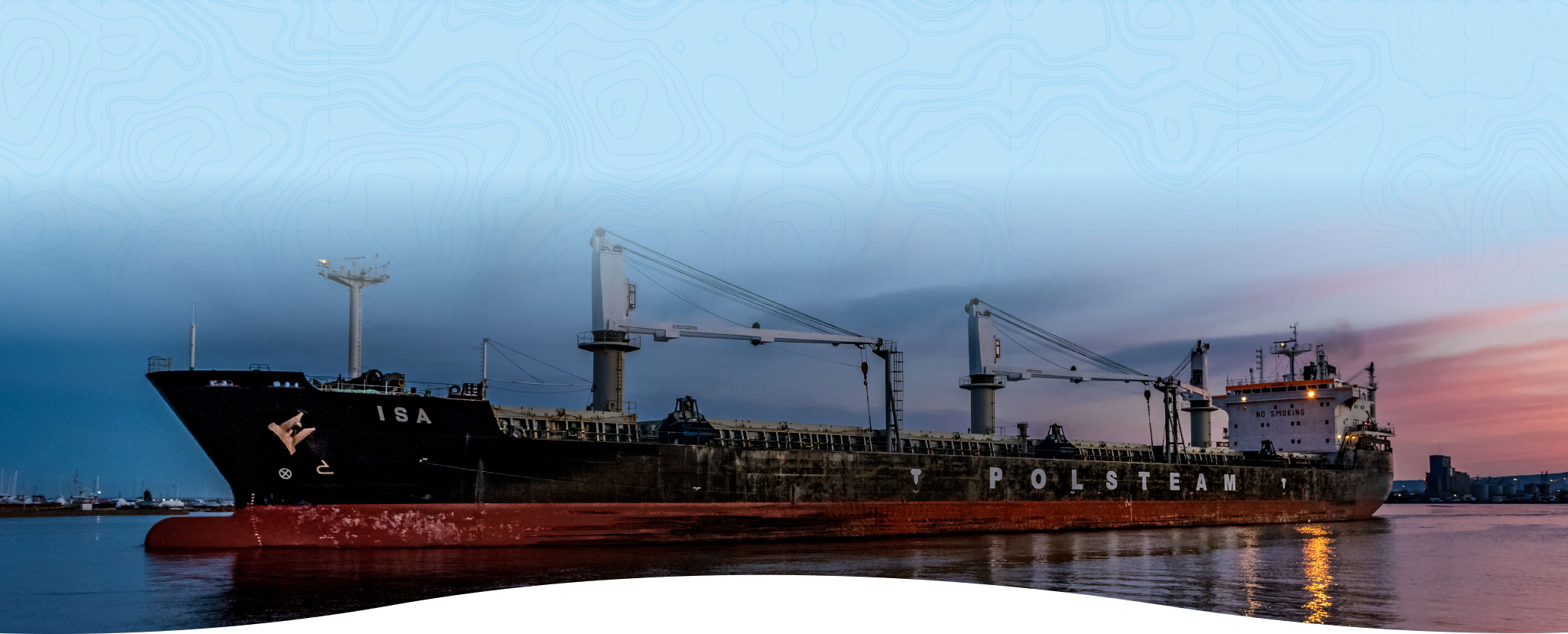
DULUTH, Minn. — The 2020 maritime shipping season will be remembered for early promise crushed by the coronavirus pandemic, as total tonnage through the Port of Duluth-Superior dropped to 25.8 million short tons, the port’s lowest single-season total since 1938.
Each of the port’s major cargo categories experienced season-over-season tonnage declines, most notably iron ore (down 21.9 percent) and coal (down 33.2 percent), with the pandemic withering North American demand and production.
Despite the drop in iron ore tonnage to 15.4 million short tons, that total still exceeded the 2015 and 2016 iron ore tonnage totals, when illegal foreign steel dumping hampered the market.
Coal tonnage, which peaked at 22.1 million short tons in 2008, fell to 5.4 million short tons in 2020.
The silver lining in 2020 was wind energy cargo, which sailed into Duluth’s Clure Public Marine Terminal at a record-setting pace.
For the season, Duluth Cargo Connect welcomed 525,000 freight tons of wind cargo, easily surpassing the previous record of 306,000 freight tons set in 2019. Looking beyond the numbers, the port’s emergence as a wind cargo hub was an important win for cargo diversity and also for the expansion of renewable energy nationwide.
Additionally, grain tonnage approached 1.4 million short tons, finishing near its 2019 total and slightly above the five-season average. Combined with the record amount of wind cargo, this helped generate 85 overseas vessel arrivals to the port in 2020, equaling the 2019 total, which was the highest since 2010.
For the Great Lakes-St. Lawrence Seaway System as a whole, grain tonnage jumped 27 percent season-over-season, helping offset drops in other cargo categories and keeping 2020 Seaway tonnage nearly level with its 2019 total.
Another Duluth-Superior bright spot was the progressive tonnage improvements of the season’s final months.
In August 2020, total tonnage was nearly 31 percent behind the 2019 pace. That deficit steadily declined through the fall and early winter, boosted further by a robust January float during which total tonnage jumped 66 percent over the January 2019 total.
“The 2020 shipping season was obviously very difficult, and the port’s tonnage total reflects that, but the late-season rally was encouraging,” said Deb DeLuca, executive director of the Duluth Seaway Port Authority. “With mines reopening, steel demand rising and COVID vaccinations beginning, it hints at hope for 2021.”
Additional Notes:
- While the coronavirus pandemic adversely affected tonnage, the pandemic’s health impact was minimal on seafarers visiting the port. The U.S. Coast Guard reported zero positive COVID-19 cases on ships transiting Duluth-Superior during the 2020 shipping season.
- Four domestic vessels are wintering in Superior, Wis. This quartet includes the Honorable James L. Oberstar and Lee A. Tregurtha (at Fraser Shipyards), the Paul R. Tregurtha (at the Midwest Energy Resources Company terminal) and the Burns Harbor (at the Enbridge dock). During winter layup, the region’s skilled tradespeople perform maintenance necessary to prepare these ships for the 2021 season, which opens March 25, the Soo Locks’ scheduled reopening date.
###
Approximately 800 vessels and 35 million short tons of cargo move through the Port of Duluth-Superior each year, making it the Great Lakes’ largest tonnage port and one of the nation’s top 20. The Port supports 8,000 jobs and contributes $1.4 billion in business revenue to the regional economy. Learn more at DuluthPort.com.

